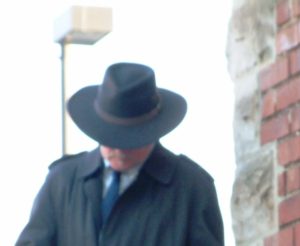A little over one hundred years ago, during World War I, the world was thrust into a flu pandemic. It was named the Spanish Flu yet it didn’t originate there. Spain did have a massive outbreak including their King Alfonso XII. It got its name sake because Spain, was not blacked out for news, due to World War I, like other European countries.
Unlike what the world is experiencing today, where we know that Wuhan, China is where the Coronavirus (COVID-19) outbreak started, in 1918, there is questions where? Some suggest it started in the United States, some in Europe, while others still say Asia. But one thing was for sure, within six months it was world-wide. It was believed to have spread from the seaports, loading docks into the inner cities.
While exact figures are still unknown, an estimated five hundred million (500,000,000) humans contracted the flu, including six hundred-seventy-five thousand (675,000) in the United States. Over the course of the pandemic, deaths from the flu world-wide ranged from twenty million (20,000,000) to one hundred million (100,000,000). If it was the later, then that would represent three percent (3%) of the world’s population died due to the flu and complications. Much of the spread was attributed to the war due to the fact so many military personnel were shoulder to shoulder traveling and fighting.
In the United States, just a little more than a year after Woodrow Wilson, agreed to send troops to Europe in World War I, there was a major outbreak at Camp Funston in Fort Riley, Kansas, with one hundred coming down with the flu. Within a week that number increased four-fold. In May 1918, U.S. soldiers were crammed together on boats going to Europe to fight. In September 1918, there was another outbreak at two military installations in the Boston, Massachusetts area. The flu was so contagious that six days after the first case there were six thousand, six hundred-seventy-four (6,674) diagnosis. At one camp alone there were fourteen thousand (14,000) cases, with seven hundred-fifty-seven (757) deaths. Some historians claimed that the participation in World War I created a shortage of physicians and professional nurses back in the United States. Additionally, some historians claimed, while the flu virus was spreading on these military bases, they failed to use trained African American nurses. Why? In 1913, the progressive President Wilson re-segregated the military. More people died from the flu in 1918, than American soldiers were killed on the battlefield.
Starting in September through November 1918, the influenza outbreak became more deadly. First, beginning in large, densely packed population areas. When hospitals were overrun with flu patients, schools, and other large buildings were converted to make shift hospitals staffed with medical students. New York City required all flu patients to be isolated at home or in the city hospitals. Other hard hit cities were Chicago, Philadelphia and San Francisco. As the situation deteriorated in Chicago, they closed schools, movie houses and prohibited public gatherings, plus, called for volunteers to assist nurses with the growing number of ill. In Philadelphia, temporary morgues were set up to handle the corpses waiting to be buried. In some rural areas of the c ountry, families were forced to bury their own family members. San Francisco required everyone to wear masks when going out in public. In October alone in the United States, an estimated one hundred ninety-five thousand (195,000) died.
ountry, families were forced to bury their own family members. San Francisco required everyone to wear masks when going out in public. In October alone in the United States, an estimated one hundred ninety-five thousand (195,000) died.
Finally, the American Public Health requested the following: stores and factories stagger opening and closing hours; and, Walk to work rather than use public transportation. Some larger metropolitan areas asked their citizens to confine themselves. The illness was so devastating to the work force that businesses were shut down and crops weren’t harvested.
When World War I was over in November 1918, the demobilizing again increased the influenza, as military were again packed in like sardines on ships and sent home.
Unlike today, it took until December 1918 (more than nine months after the outbreak) before the Public Health started education programs speaking of coughing, sneezing and “nasal discharges”. Yuk.
In January 1919, there was another surge of influenza throughout the country. The case was so severe, (Please don’t laugh at what I am about to type) that the Trustees of the Boston City Hospital asked their mayor for a special funds appropriation of $3,000.00 to study the treatment of this influenza. (Honestly, this is not funny just unbelievable on so many levels.) Up until that time, no doctors or scientists had studied it or had an idea of how to treat the virus.
By late winter of 1919, the United States was starting to get this flu under control but the rest of the world was still struggling. As a matter of fact, in April 1919, President Wilson contracted the flu and collapsed, while at the Versailles Peace Conference, where the flu was still out of control in Paris.
By the summer of 1919, the Spanish flu epidemic supposedly came to a declared end. Why? Because the sick had died off, while the remaining population developed an immunity to this strand of influenza.
God Speed to the United States and the world, we are blessed that our capabilities today are so much better than one hundred years ago.
